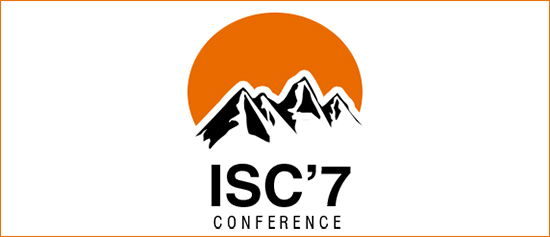ISC’7 2024
Join us for a talk with the Fraunhofer Institute for Wind Energy Systems and the University of Bremen on combining geological, geotechnical, and geophysical data and other site investigation data to cost-effectively predict CPT parameters on an area-wide scale. Have your questions ready for our team!
Comparison of different prediction methods to derive synthetic CPT profiles – an offshore wind farm case study from the German North Sea
Authors: Lennart Siemann (1), Pedram Masoudi (2), Rajeswar Reddy Maraka (1), Raluca Opris (1), Yashwardhan Pande (1), Nikolas Römer-Stange (3), Natasha Morales (1) and Tobias Mörz (3)
(1) Fraunhofer Institute for Wind Energy Systems (IWES), Department of Subsurface Investigation
(2) Geovariances
(3) University of Bremen, Faculty of Geosciences
Abstract:
The further development of offshore wind farm areas in various countries plays a key role in the transition of energy production towards renewable sources. As offshore wind farm areas tend to expand and the amount of ground truth data is limited, the estimation of geotechnical parameters at unknown locations integrating other site investigation data becomes a necessary tool. This is especially relevant for cost-efficient area-wide site characterization. Here, the proper integration and correlation of geotechnical and geophysical data is a key factor for reliable ground model building. This study investigates different prediction methods while presenting a modeling framework that incorporates geological, geotechnical, and geophysical information to derive synthetic Cone Penetration Testing (CPT) profiles using offshore wind farm site investigation data from the German North Sea. We combine geological interpretation, CPT data, and 2D ultra high-resolution seismic reflection data. The geophysical and geological information are used to guide geotechnical parameter prediction. Additionally, seismic horizons constrain the prediction as structural information. For evaluation, we test and compare several prediction techniques with different levels of complexity, from geostatistical methods to machine learning. Seismic attributes are used as auxiliary information to improve CPT parameter prediction. To validate the results, CPT parameters are predicted onto a representative 2D seismic line, and a leave-one-out cross-validation (blind test) is performed. Though all methods struggle to replicate local extremes, results indicate a reduction of prediction uncertainty when implementing seismic attributes.
Keywords: synthetic CPT; site characterization; offshore wind; data integration.
7th International Conference on Geotechnical and Geophysical Site Characterization
“Ground models, from big data to engineering judgment”
